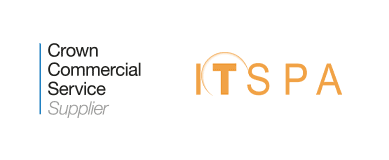Until recently, most customers trying to contact a business quickly had only one viable option – the telephone. In most instances, alternative contact details were available, but frustratingly for the customer, these methods were unlikely to produce a response quickly.
But a phone call doesn’t work for everyone. During the hours your business lines are available, customers manage their own busy schedules and communicate in ways that fit their lifestyles, such as text messages, emails or via social media. But to make these options work as legitimate communications channels, businesses must find ways to ensure they receive a response that’s equal to the phone call.
Not only are calls often more expensive for the customer. They're also costly for the contact centre because customers who phone wait to speak to agents, taking up more of their time, and resulting in longer waiting times and slower responses. SMS, email or Twitter users, however, are more tolerant of short delays in a response, so by offering the option of more channels, your business can process a greater number of transactions within your target response SLAs.
Whether customers decide to reach your business through the use of email, text message, VoIP call, tweet or web form, a single, unified queue prioritises all channels equally. This means that your team of contact centre agents manages just one queue, ensuring each enquiry is handled as quickly as the next, and with an equally high level of service. This efficiency ensures customers are less likely to revert back to the slower, more costly telephone option.
8 intelligent features that improve the customer experience
By providing customers with a choice of communication channels, you can manage customer interaction and improve their overall experience in a number of ways. A single, unified queue - such as that within Hostcomm’s Inbound Call Centre Services – offers several intelligent features for improving the customer experience. With this type of system, you can:
1. Detect and respond to complaints or comments which customers post on Facebook and Twitter before they escalate. It is possible to route tweets and Facebook messages into the unified queue and forward them to the next available agent. Some call centres use social media interaction 'miners' to accomplish this and others use customised software.
2. Provide greater out-of-hours services cost effectively. Through the support of email, chat, Twitter and other social networks, it’s possible to handle enquiries outside business hours with fewer staff members. Most customers won’t expect a phone call in the evening, but would be pleased to receive an email or chat response.
3. Provide automated answers to frequently asked questions on Twitter. You can create auto responders by detecting certain keywords such as "opening times" or "contact details" in the text of a tweet. An instant answer will always please a customer.
4. Respond quickly to SMS messages within the same interface. SMS messages can be converted to an email and sent to the unified queue. There’s no need for the agent to move to another SMS messaging interface.
5. Deliver an efficient response to deaf customers. Some unified queues offer deaf minicom (textphone) services or support video sessions, so that agents skilled in sign language can communicate with deaf customers effectively.
6. Manage resources based on levels of channel use. The unified queue system can help build a profile of channel usage based on the time of day. This way, your business can allocate resources more efficiently, improve customer service and keep costs down.
7. Integrate with customer relationship management (CRM) systems for greater service. With CRM integration, agents see up-to-date customer records (such as through screen pops) regardless of which channel the customer chose to initiate communications, improving response times.
8. Display average response times by channel on your website. Unified queue reports generate real-time response statistics which can be displayed on your website to help customers choose the best channel of communications.
The benefits of the multi-channel contact centre solution are clear for both contact centres and customers. The single queue for all channels helps your business to interact more effectively with today’s consumers, who not only prefer, but expect to be able to contact you in different ways. It means contact centres can reduce telephone costs while completing more transactions within acceptable timelines. And, it means that every customer or potential customer is rewarded with a timely and satisfying experience regardless of which method of communications they choose.
After all, customers are far less likely to go elsewhere if all their needs are met by your business on their first point of contact and at every point thereafter. For more information on multi-channel contact centres, contact Hostcomm on 0808 169 2149.














